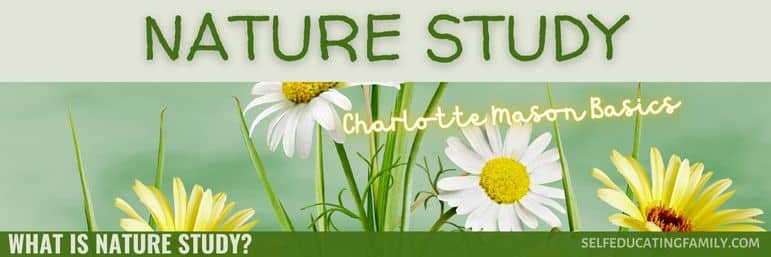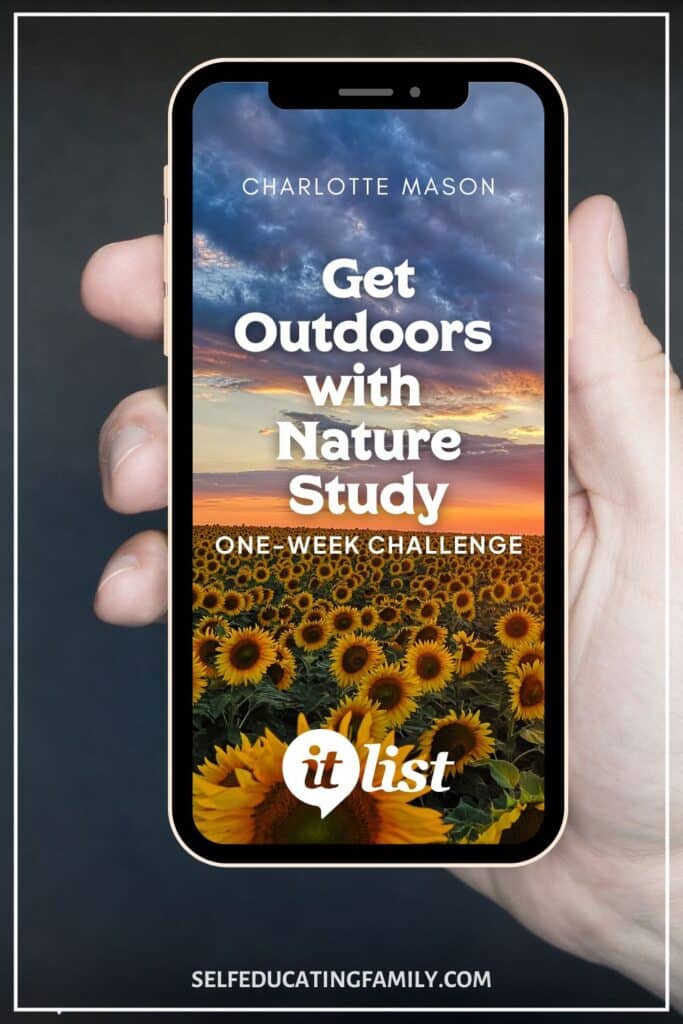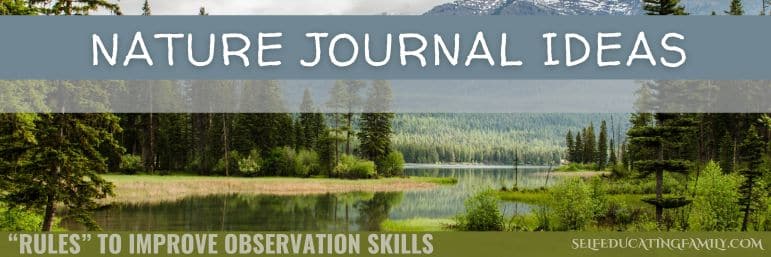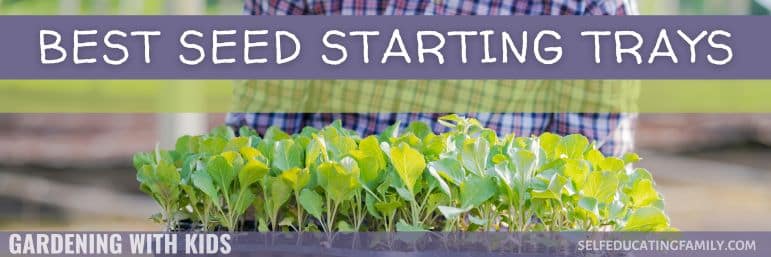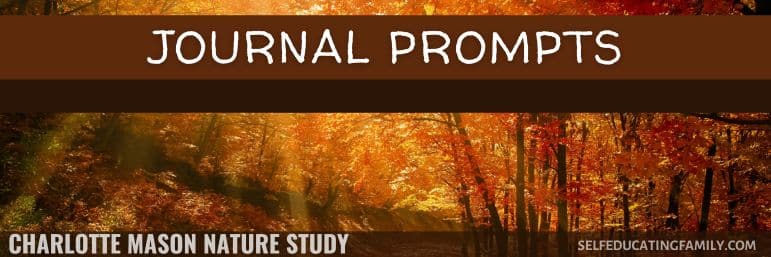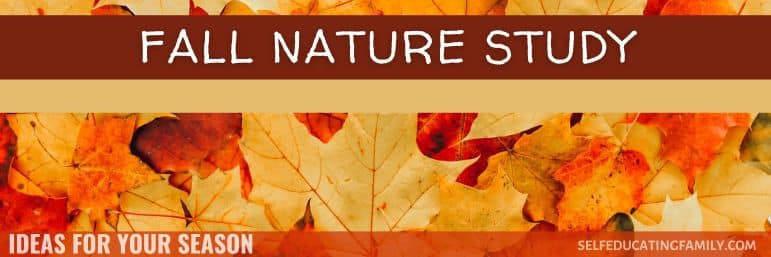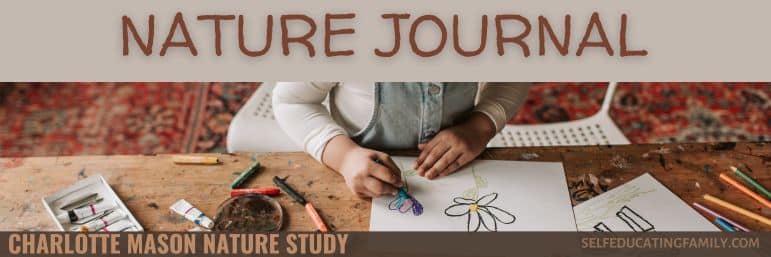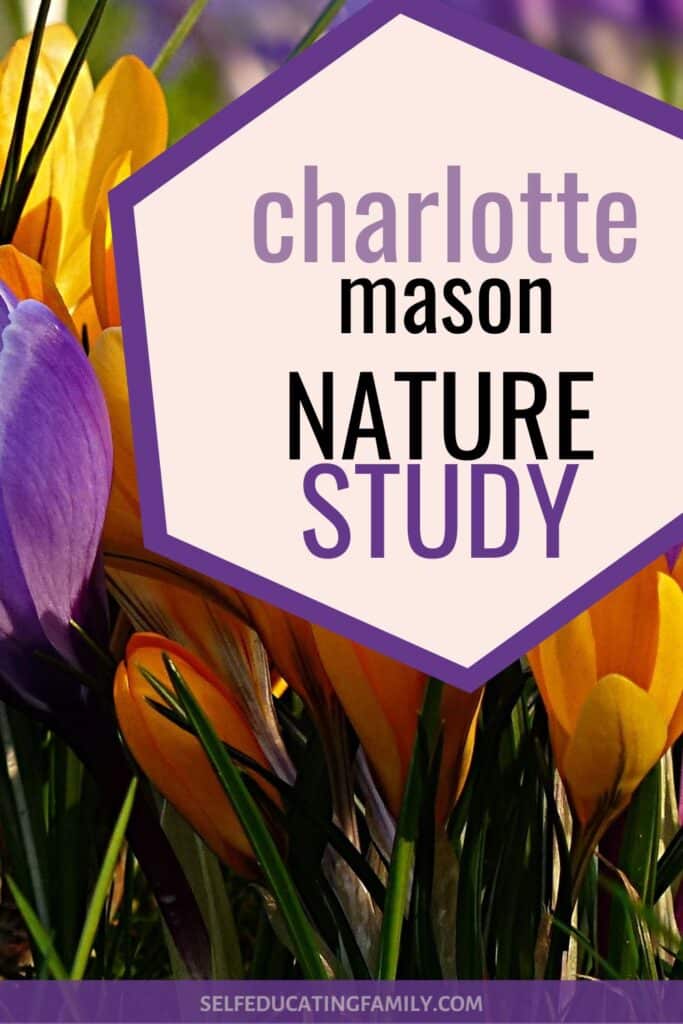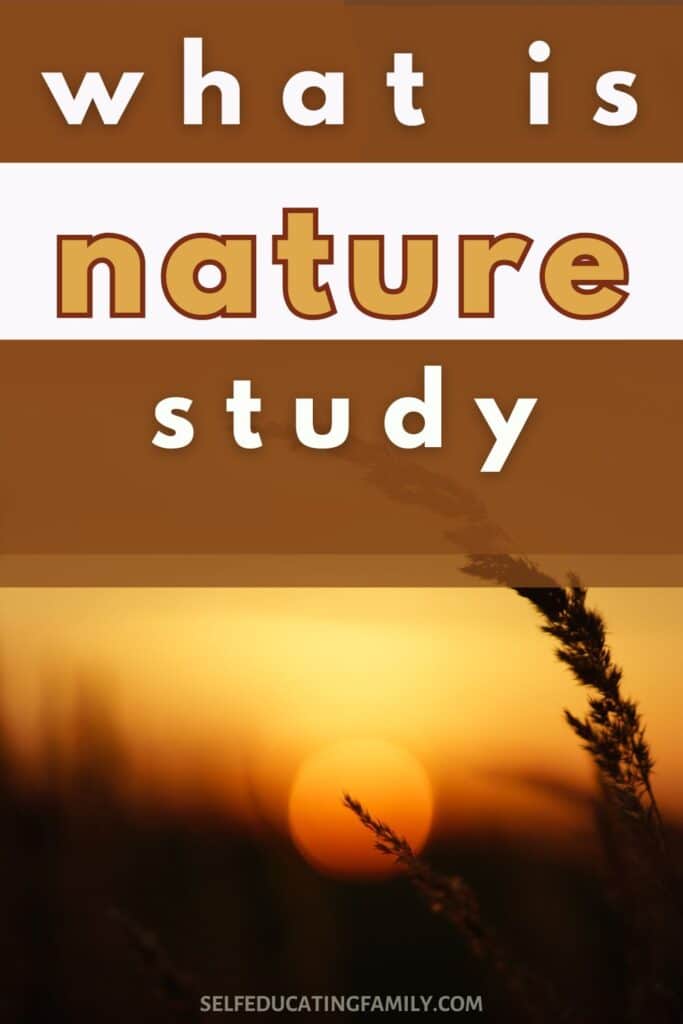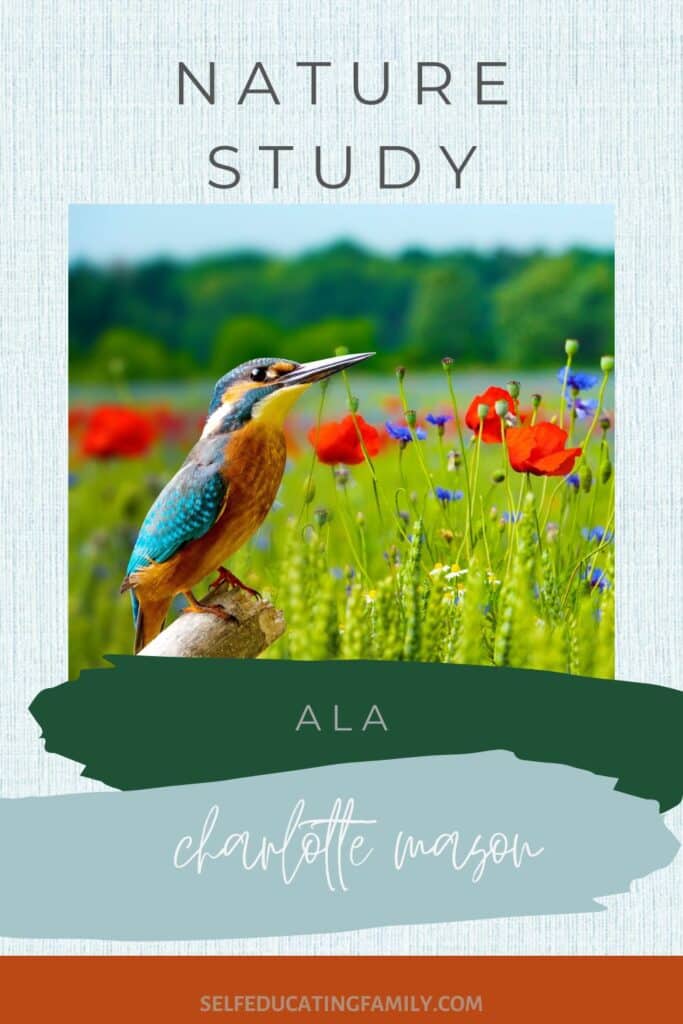In this post, we’ll look at the basics of nature study with examples and a simple way to get out in nature — the nature walk.
——————————————————————————
Simplifying Nature Study
Today, let’s look at nature study. If you’ve vaguely heard of nature study then this article will help you take the first steps to incorporating it into your day.
Now, if you are used to being out in nature and using your observation skills to appreciate the wonder of the natural world, you may want to see our other posts related to Nature Study. Or you may want to dig a bit deeper with Charlotte Mason Nature Study. If you need to brush up on your habit of observation, then head over to our in-depth look at the habits for learning to see how nature study is one of the best ways to increase your habit of observation.
* Disclosure: This post contains affiliate links, meaning that if you make a purchase after clicking through, SelfEducatingFamily will receive a small commission at no extra cost to you.
History of Nature Study
Nature Study at its simplest level is learning about the natural world.
Believe it or not, this topic started as an educational idea in the late 19th century and was formalized by several naturalists in progressive education.
It’s funny how progressive education has changed over the years, isn’t it?
Nevertheless, studying nature became part of the school curriculum for science in the 1920s in the US.
Naturalist Anna Botsford Comstock
To me, Comstock is THE name in this field because she wrote the definitive guide called The Handbook of Nature Study. And don’t let the name fool you – this is only a “handbook” if you have hands the size of Andre the Giant.
This is a comprehensive and massive tome. I highly recommend it. It can answer so many questions. The book is divided into categories of areas to study one by one. I found her approach very refreshing. Ambleside Online also recommends it for this subject.
How to Use the Handbook
Basically, you choose a topic for a semester and you, the teacher pre-read the related chapter to keep a step ahead of the kiddos. Each chapter ends with questions to ask – but even Anna Botsford Comstock says don’t just ask the questions. Rather, you are using them to help the child in his investigations.
“The direct questioning method, if not employed with discretion, becomes tiresome for both pupil and teacher.”
—Anna Botsford Comstock
But pre-reading is optional. The author also suggests that you can use the book in “joint investigations” with the pupil. I’ve heard some moms carry the book as a reference in case you come across something that you need to look up. Just think how strong you will get if you carry this handbook on your walks!
Remember: “The chief aim of this volume is to encourage investigation rather than to give information.”
If you don’t know where to start, you can select a focus topic for the semester based on interests or follow along with the schedules selected by Ambleside online. Do try to follow nature where you live – if it is winter, “garden flowers” might not be the best thing to start with!
And be flexible, if you are at the pond studying waterfowl and a child takes an interest in a frog, go with it.
Get out in Nature
It might be obvious to say, but the point of this subject is to get out in nature and study it. We do this with 2 things:
- The Nature Walk
- Building Observation Skills
The Nature Walk
Schedule regular walks.
Typically, the afternoon is a good time to do this, especially if you have access to large natural areas. We liked to walk to “Afternoon Homeschoolers’ Park Day” which was held at a local park. When we would take the round-about way, we’d have to walk through a small forest-like area which always held surprises for us.
If you can’t make time EVERY day to go to a park (which typically is difficult!) then “getting outside” time is always good. On non-park days, we liked to take a break type of nature walk in the morning around the block. It’s a good way to break up formal lessons if they are getting tiresome and the kiddos need to burn off some energy. But it does take more time than mini-brain breaks!
Observation
Remember, the point is to observe the natural world.
So you have to be able to observe it. Sometimes this means being quiet on a nature walk. Sometimes this means stopping along the way to really watch something. And sometimes it means pausing when you have something you have to share with each other.
When we did nature hikes with our co-op, we set up rules from the outset – no talking until we got to the midway point (which we identified before we started), then we talked about what we observed and followed with collections or journals or cameras, then some late lunch and the return walk was set aside for “free socializing” time.
Setting expectations is a great idea – especially in a group setting.
How the focus topic fit in
The funny thing about having a focus topic like “birds” or “trees” is that everyone really starts to see the topic – just by saying “let’s look at birds this month.”
I also liked to get picture books on the topic which we would read in free reading time.
Bonus of walking with a group
Besides the obvious advantages of walking with friends, doing a group nature walk can help because you share expertise. I might know 3 edible wild plants, but my friend knows how to identify the big trees. And one time, we had a kid who absolutely loved birds and had been studying them for 2 years – he knew all kinds of interesting things that he could share with us.
Bottom line
Get out there and look at nature. Don’t overcomplicate it. Enjoy and observe the wondrous natural world.
FAQ
Simply put, this includes the study of plants, animals, and the natural world.
The Nature walk is a great example of how to enjoy nature. An inside nature study can be as simple as watching a chrysalis grow or sketching a leaf that you bring inside.
Careful observations of nature can inspire lifelong learning and form the basis of scientific inquiry. How many entomologists started out their lifelong passion with a “bug” collection? How did the meteorologist “Snowflake Bentley” figure out how to photograph snowflakes if he never formed a relationship with the wonder of a snowflake? Many young naturalists grow up to work in the sciences.
Nature study helps children form their relations to the natural world. It is to science as learning to read is to literature. Many sciences spring directly from nature study, such as botany, meteorology, astronomy, biology, etc. Even the life sciences and physical sciences have some basis in nature study. When the apple fell from the tree, wasn’t someone watching?
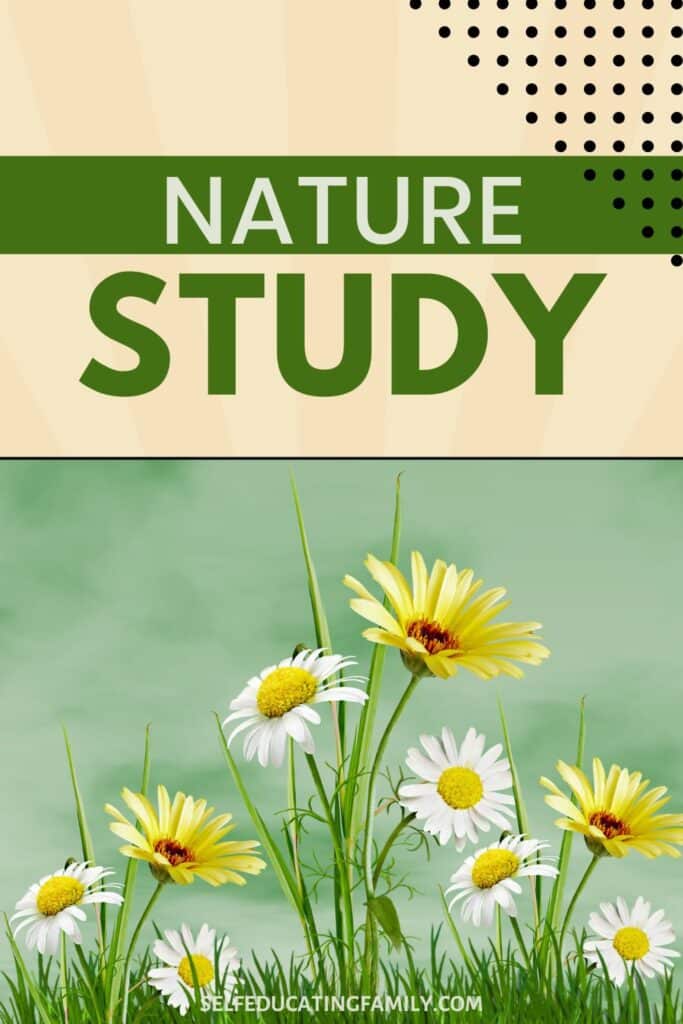
Get the One-Week Nature Study Challenge!
I will guide you through the routines and skills you need for your nature study journey.
Related articles
Keep learning
- Nature Study in a Nutshell | Simply Charlotte Mason
- Nature Study | Ambleside Online
- Nature Study IS Science | Our Journey Westward
- Nature Study for Beginners | Heart & Soul Homeschooling
